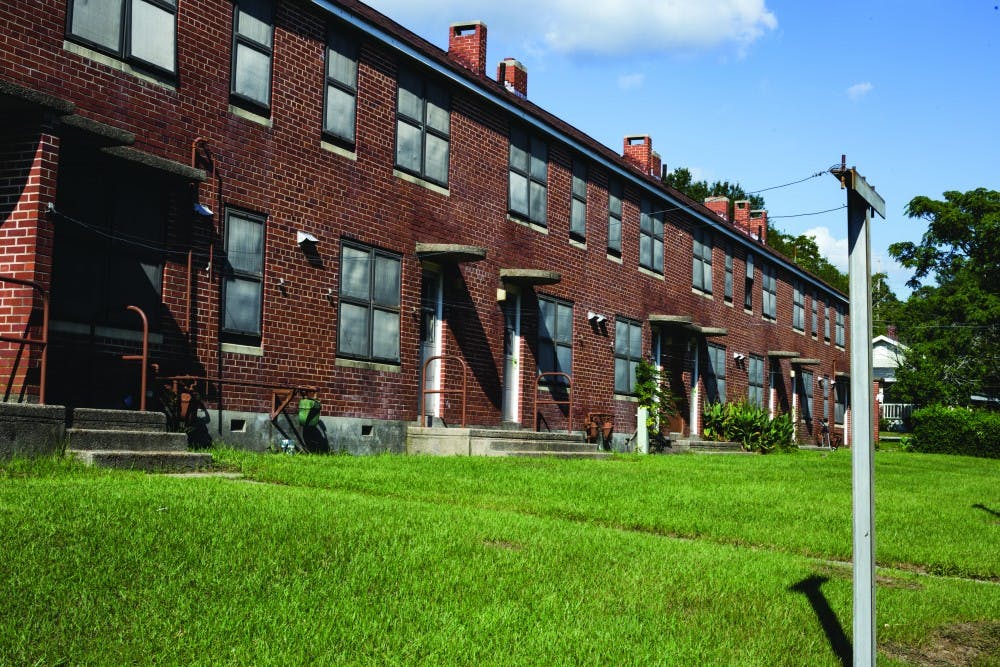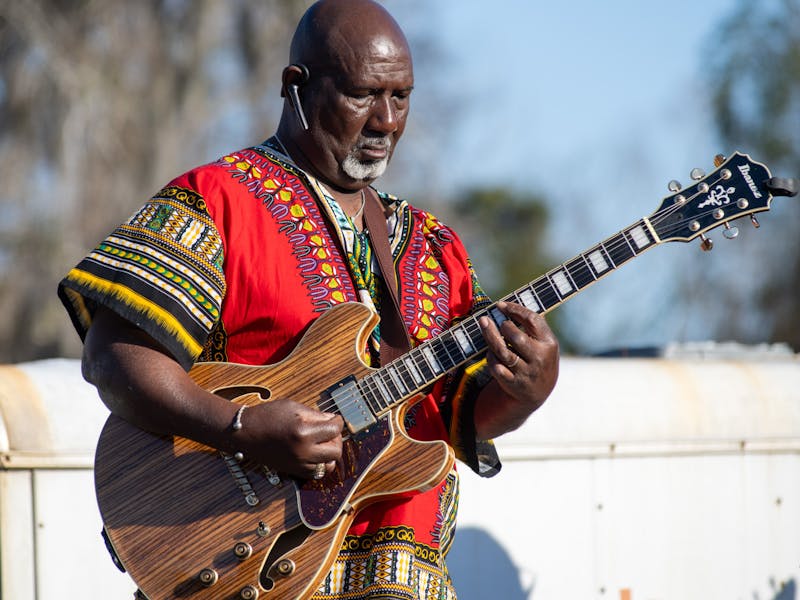The drive down Taylor Street is lined with strip malls, grimy Chinese restaurants, and discount tobacco stores. It’s also the home of the oldest public housing community in Columbia, and one of the oldest in the nation. Built during the New Deal 70 years ago, Gonzales Gardens sits at the corner of Two Notch Road and Forest Drive. It is a cluster of long brick buildings and grassy open spaces with clotheslines strung between back doors and small gardens potted on the steps.
This landscape is about to change. Early next year, the Gonzales Gardens neighborhood will be torn down, leaving an empty lot in its place.
To Julia Prater, deputy director for affordable housing, demolishing Gonzales Gardens will provide a clean slate, a space for change. She envisions a mixed-use community with young professionals, college students and Section 8 tenants living side-by-side. According to her, this would be a healthier and safer community, providing more options for the people who live there.
“Concentrating poor people in one area is a failed social experiment,” she says.
A mixed-use community would lead to a sense of ownership and lower crime rates. But there is no plan for funding this proposed $60 million construction. This means that there is no assurance that affordable housing will be provided. If the city can’t get the grants, the lot will be taken over by developers who can afford to buy it. Therefore, the lot will sit empty for at least two or three years, according to Prater.
“The transformation plan encourages demolition,” Prater says. “It’s more viable, in case choice neighborhood funding isn’t available.”
According to the National Black Chamber of Commerce, Columbia is the top city in the country for gentrification. As downtown spreads, it brings with it urban renewal and the urge to “fight the blight.” This “blight” on Columbia’s landscape is its poor neighborhoods — Liberty Hill, Saxon Homes, Benedict Allen Court, Gonzales Gardens. Public housing is seen as a dead-end — somewhere you end up when you have no other options left.
The people in these communities live in a culture of disrepair. Buildings are poorly maintained, and there is a lack of renovation and an uptick in crime. Moving these neighborhoods is seen as a way to fix the problems rampant there. “Bad guys prey on poor folks,” Prater says. She suggests that in a neighborhood with home ownership, these people would be safer. The community wouldn’t be as transient, and there would be a chance to set down roots. Residents would garner a greater sense of responsibility.
It’s not only the question of affordable housing. Relocating residents can lead to changes in the availability of good schools and jobs. Most of these residents are being moved to Section 8 housing in the suburbs, which might not have as many available amenities as in the city, such as reliable public transportation. Proponents of the plan suggest that living in mixed income areas provides a better vantage point for the world and an improvement in education opportunities. Children can see a future besides the projects — a gateway. But these neighborhoods still remain segregated along class lines. But there’s really not enough research to tell if this movement is as successful as people think.
Is crime tied to public housing, or is there a deeper connection? Why are these neighborhoods seen as “blighted”? These are hard questions which bring to the surface discussions on racism and classism. Dr. Bobby Donaldson, a professor and historian at the University of South Carolina, doesn’t see the plan as fruitful.
“It’s been rare that the families who once lived in these communities can come back,” he says. “There is a regrettable erasure of history.”
It whispers of the loss of Ward One. The entire community— churches, neighborhoods and schools— was destroyed to make way for the expansion of USC’s campus in the '50s and '60s. Since then, there has been an ongoing movement to preserve the history of these people. A semi-success story is the renovation of the Palmetto Compress building, rather than demolition. Expensive apartments and boutiques are planned for the building, along with a small museum of photos and stories of the people who once lived and worked in the area.
Currently, there’s not much advocacy to save the buildings of Gonzales Gardens. Demolition is more attractive than restoration, but there is a sense of history being lost. There are political and racial initiatives behind this apathy as well, Donaldson points out. The history of public housing is marketed as a poor black history, not one that the city wants to keep prominent. But there is a voice to be heard from the people who lived here.
“What captures my eye is the playground, the clotheslines, the small gardens that have their own stories,” Donaldson says. These stand as ripples of humanity in a place seen as forgotten and left behind.
The university does not exist in a vacuum. Students here are informed by the culture of the city around them with the diversity that this brings. We have to decide how we want to be involved in this community and how we want to influence it. Gentrification shuts our eyes to the stories around us. It destroys the communities that this city was built on.
Currently, according to the Columbia Housing Authority, there are no open applications for public housing. Prater says that only 30 of the families from Gonzales Gardens are still in need of relocation. As mixed-income housing replaces public grant neighborhoods, the most at-risk people are moved into the suburbs, and their way of life is upended. As mentioned before, return is difficult. It is hard to describe the exact number of public housing units available in Columbia, but according to Donaldson, these communities are falling by the wayside. The demolition of Gonzales Gardens brings Columbia one step closer to the loss of public housing all together. Replaced by an empty lot, a silence, a ringing in the city's ears.



